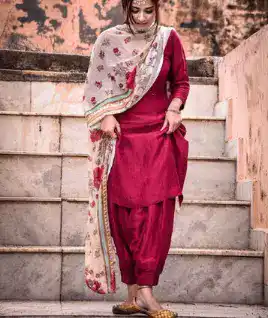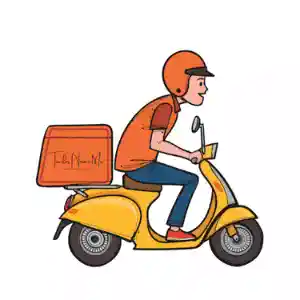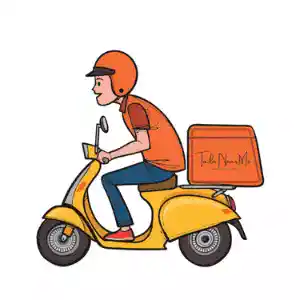Delhi is divided into two parts, one old and the other new Delhi. The area around New Delhi has been known as Shahjahanabad during the Mughal period. It is crowded and developed and has some lanes that are very narrow. Old Delhi, however, presents a bustling and congested part of the city with lots of buildings most dating back to hundreds of years ago. Connaught Place was designed by Robert Tor Russel and stands as one of the largest commercial complexes found in New Delhi which houses various much-needed businesses ranges from shops to hotels on the ground floor and offices , among others, up above. Janpath cuts across Rajpath, a busy road connected to many prominent landmarks such as India Gate, Parliament House, Rashtrapati Bhavan amongst others. Other famous places include Chanakyapuri, the Diplomatic Enclave of Chanakyapuri where various foreign consulates and embassies resideThough the area already offers historical attractions such as Red Fort, Juma Mosque, and Chandni Chowk, Old Dehli adds weight through its notable sightseeing sites like the Lotus Temple, Qutub Minar, Jantar Mantar amidst Nehru Museum.
26th January is surely going to be a vibrant thread of festivals in Delhi at the Gateway of India where folk dancers from all states congregate to showcase their talents. Inauguration of Swarnavahini Sewa Griha inside, inaugurated by Shri Nitin Gadkari, Minister, PWD (PD) on the outside, engulfed in controversy, many visitors and tourists do flock to witness this grand occasion. Another festival in the city has been called Dussera or Ramlila when defined as October 10 for 10 days, it shows an effigy is burnt violently as fireworks explode come out and paint sky red. Overall Delhi does indeed turn with smiling faces and full enthusiasm into a city of festivals.
Delhi being the Capital of India holds a significance beyond 3000 years both its rich historical significance shown itself in present times too. Indraprastha, the capital of Pandavas near the Yamuna river Aravalli region was once ruled by them whilst Mahabharata era. The great ruler carves a reminder called Surya Kund wherein Rajput kings stand. After 200 years of British rule the Indian National Flag being hoisted at the Red fort on 15th August 1947 which marked independence. Delhi had an Urdu speaking Muslim mainly before Independence. Today’s New Delhi stands emerging magnificently as the capital of India afterwards reflecting its glorious past still gripping on its present size.
The capital city of Delhi and the largest city of India is full of temples that declare a huge diversity in religious, cultural aspects of the region. Here are some major temples one can find in Delhi: Jagannath Temple, Kalka Mandir (north), Laxminarayan Temple, Uttara Swami Malai Temple, Yogmaya Temple, Swaminarayan Akshardham, Chhatarpur Temple, Hanuman Temple, ISKON Temple, Sai Baba Mandir, Sri Ramakrishna Temple, Bhairav Temple, Gauri Shankar Mandir, Sri Aishwarya Mahaganapathi Temple, Sri Aiyyappa Swamy Temple, Sri Ganesh Temple, Sri Narasimha Swamy Temple, Sri Rama/Venkateswara Temple, Sri Uttara Swamy Malai (MALAI MANDIR), and Sri Venkateswara Temple. Every one is meant for devotees from all walks of worship as every temple entices to its believers everywhere. Any one may visit these temples but it would take a long time to relive the same feeling and explore at these architectural marvels; visiting a few could be satisfying experience in Delhi.
Delhi being a municipality, it lies on many sewers that carry the waste materials cleaned out of people’s houses to another place thus making Delhi an important garbage processing centre in India. Besides its size and position in the country, Delhi also has a lot of railway stations connecting it with various parts of the country. Stations include Hazrat Nizamuddin, Old Delhi Junction, Rohtak Junction, Delhi Shahdara Junction, Anand Vihar Terminal, Tilak Bridge, Delhi Cantt. , Shivaji Bridge, Delhi Sarai Rohilla, Shakur Basti, Delhi Kishan Ganj, Sabzi Mandi, Bahadurgarh, Sadar Bazar, Tuglakabad, Dayabasti, Vivek Vihar, Okhla, Anand Vihar, and Nangloi which help people and goods to move within the city as well as outside thus making Delhi major transport hub in the country.
Delhi is divided into nine districts. Central Delhi, often referred to as ‘the heart of Delhi’ and the government offices, historical construction centers and markets are housed in this district. The entire city of Delhi is included in Delhi District. This includes the old and new areas. East Delhi, one of the fastest growing districts in India with its residential colonies and shopping hubs has a historical landmark on its name – Akshardham Temple. North Delhi or NCR for short is considered to be the best property market in Delhi because of its suburb-type neighborhoods, educational institutions like AIIMS and IIMs and popular markets such as Chandni Chowk known for centuries. North East Delhi or NEDelhi strictly states that it is mostly populated by residences mainly located on the outskirts of Greater Noida or Ghaziabad Industrial Area. Along with New towns, almost all malls and hotels can be found here. North West Delhi boasts mixed buildings of both urban and rural quarters. At its northwest corner stands Badarpur Airforce Station with huge industrial developments . Roop Nagar Rajouri Garden Holiday Inn Domestic Terminal Ashiana Viman1 Ashiana School Suraksha Kumar TLPC
































